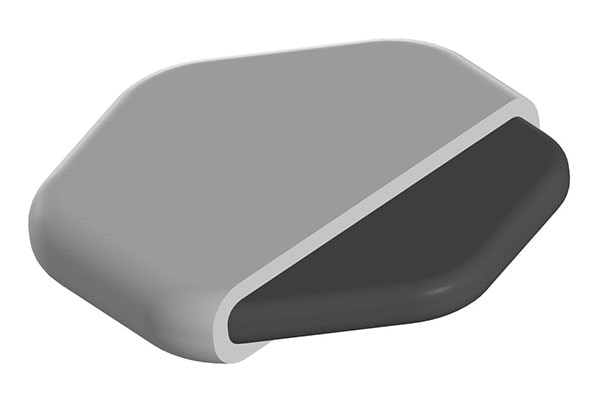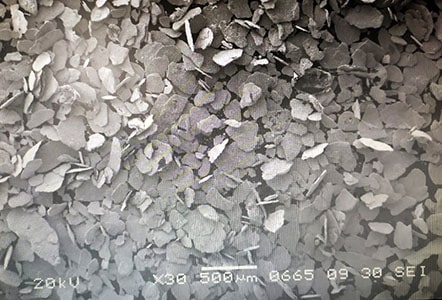Booster materials developed and commercialized Nickel-coated graphite powders using highly-engineered, original and robust coating processes.
Nickel-coated graphite powders can serve as complete substitutes for solid nickel powders with similar properties, significantly reducing costs. Moreover, these powders have a significantly lower bulk density, which leads to a decrease in the weight of the corresponding materials produced from them. These powders are used as fillers in epoxy and silicone compounds, rubbers, and other chemoplastics and thermoplastics. The addition of these powders imparts electrically conductive and radio shielding properties to the composite materials and products made from them.
General characteristic: These types of composite powders are bulk substances consisting of plate form graphite particles which have a certain size. Each of them coated by nano-layer of pure nickel. They have high electrical conductivity and radio shielding properties.
Particle shape: Particles has lamellar (flake) shape. The base (core) of each particle consists of high purity graphite (99.9%), which is covered with a thin layer (shell) of metal nickel (99+%), Fig.1

Figure 1. Core-shell model
Particle sizes: The particles can have sizes ranging from a few to 200 microns. The entire range is divided into several fractions, each with a narrow size distribution. The shell thickness is in the range of hundreds of nanometers.
Bulk density: The bulk density of the powders depends on the average size of the particle fraction, for example:
Fraction (100-200 μ) – 1,2-1,4 g/cm3;
Fraction (20-50 μ) – 0,6-0,8 g/cm3.
Resistivity: Resistivity is measured at a minimum bulk density and depends on the particle fraction. When compacting the powder, the resistivity drops by several orders of magnitude.
Fraction (100-200 μ) – (2-5)*10-4, Ω*mm2/m;
Fraction (20-50 μ) – (5-10)*10-4, Ω*mm2/m;
Color: Powder color ranging from gray with a metallic sheen to dark gray.
Microscopy: The image of Ni/C powder particles obtained using scanning electron microscopy (SEM) is shown in Fig. 2.

Figure 2. SEM image of Ni/C particles
If you are interested in the materials we produce, or you are interested in creating materials for your technological process, please Contact Us